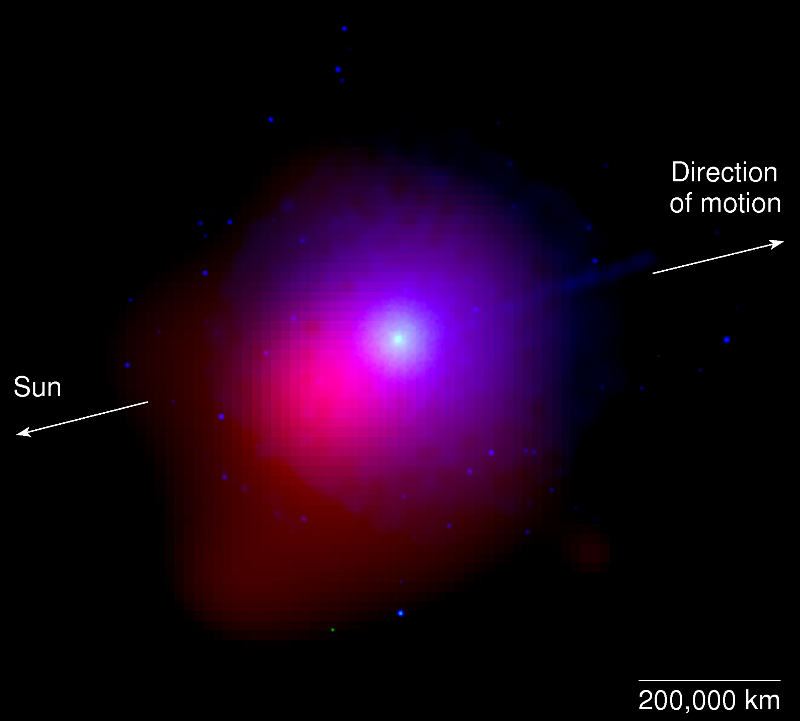
 Credit: NASA/Swift/Univ. of Leicester/Bodewits et al.
Credit: NASA/Swift/Univ. of Leicester/Bodewits et al.
A Swiftly Tilting Comet
What to do with time off? While waiting for the next black hole to be born, NASA's Swift gamma-ray burst hunter paces tirelessly around earth, eyes heavenward in search of exciting phenomena. And the Universe never disappoints. Out of a clear black sky comes Comet Lulin, a new comet discovered at Taiwan's Lulin observatory. Swift trained its detectors on it and snapped the gorgeous image above.
This image, which was taken Jan. 28 2009, includes images acquired by Swift's Ultraviolet/Optical Telescope (in blue and green) and its X-Ray Telescope (in red) to provide the first ever simultaneous X-ray and ultraviolet image of a comet. But comets are basically snowballs, while avid readers of the HEAPOW know that X-ray light (and ultraviolet light) is usually associated with energetic (and hot) material. So what's the source of the X-ray and UV light coming from Comet Lulin? The ultraviolet light is produced by pieces of water molecules broken apart by sunlight as the comet gets close to the sun. The X-ray emission is produced by the interaction of the comet material with the solar wind. The UV and X-ray emission are on opposite side because comet Lulin has two oppositely-directed tails.
Published: March 9, 2009
<
HEA Dictionary ● Archive
● Search HEAPOW
● Other Languages
● HEAPOW on Facebook
● Download all Images
● Education ● HEAD
>
Each week the HEASARC
brings you new, exciting and beautiful images from X-ray and Gamma ray
astronomy. Check back each week and be sure to check out the HEAPOW archive!
Page Author: Dr. Michael F. Corcoran
Last modified Tuesday, 27-Feb-2024 10:08:17 EST


